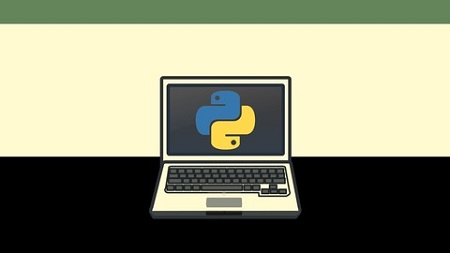
English | MP4 | AVC 1280×720 | AAC 44KHz 2ch | 51 lectures (9h 30m) | 4.93 GB
A practical programming course for office workers, academics, and administrators who want to improve their productivity.
If you’re an office worker, student, administrator, or just want to become more productive with your computer, programming will allow you write code that can automate tedious tasks. This course follows the popular (and free!) book, Automate the Boring Stuff with Python.
Automate the Boring Stuff with Python was written for people who want to get up to speed writing small programs that do practical tasks as soon as possible. You don’t need to know sorting algorithms or object-oriented programming, so this course skips all the computer science and concentrates on writing code that gets stuff done.
This course is for complete beginners and covers the popular Python programming language. You’ll learn basic concepts as well as:
- Web scraping
- Parsing PDFs and Excel spreadsheets
- Automating the keyboard and mouse
- Sending emails and texts
- And several other practical topics
By the end of this course, you’ll be able to write code that not only dramatically increases your productivity, but also be able to list this fun and creative skill on your resume.
What you’ll learn
- Automate tasks on their computer by writing simple Python programs.
- Write programs that can do text pattern recognition with “regular expressions”.
- Programmatically generate and update Excel spreadsheets.
- Parse PDFs and Word documents.
- Crawl web sites and pull information from online sources.
- Write programs that send out email notifications.
- Use Python’s debugging tools to quickly figure out bugs in your code.
- Programmatically control the mouse and keyboard to click and type for you.
Table of Contents
Python Basics
1 Get Python Installed
2 Basic Terminology and Using IDLE
3 Writing Our First Program
Flow Control
4 Flow Charts and Basic Flow Control Concepts
5 If, Else, and Elif Statements
6 While Loops
7 For Loops
Functions
8 Python’s Built-In Functions
9 Writing Your Own Functions
10 Global and Local Scopes
Handling Errors with tryexcept
11 Try and Except Statements
Writing a Complete Program Guess the Number
12 Writing a Guess the Number Program
Lists
13 The List Data Type
14 For Loops with Lists, Multiple Assignment, and Augmented Operators
15 List Methods
16 Similarities Between Lists and Strings
Dictionaries
17 The Dictionary Data Type
18 Data Structures
More About Strings
19 Advanced String Syntax
20 String Methods
21 String Formatting
Running Programs from the Command Line
22 Launching Python Programs from Outside IDLE
Regular Expressions
23 Regular Expression Basics
24 Regex Groups and the Pipe Character
25 Repetition in Regex Patterns and GreedyNongreedy Matching
26 Regex Character Classes and the findall() Method
27 Regex Dot-Star and the CaretDollar Characters
28 Regex sub() Method and Verbose Mode
29 Regex Example Program A Phone and Email Scraper
Files
30 Filenames and AbsoluteRelative File Paths
31 Reading and Writing Plaintext Files
32 Copying and Moving Files and Folders
33 Deleting Files
34 Walking a Directory Tree
Debugging
35 The raise and assert Statements
36 Logging
37 Using the Debugger
Web Scraping
38 The webbrowser Module
39 Downloading from the Web with the Requests Module
40 Parsing HTML with the Beautiful Soup Module
41 Controlling the Browser with the Selenium Module
Excel, Word, and PDF Documents
42 Reading Excel Spreadsheets
43 Editing Excel Spreadsheets
44 Reading and Editing PDFs
45 Reading and Editing Word Documents
Email
46 Sending Emails
47 Checking Your Email Inbox
GUI Automation
48 Controlling the Mouse from Python
49 Controlling the Keyboard from Python
50 Screenshots and Image Recognition
51 Congratulations! (And next steps…)
Resolve the captcha to access the links!